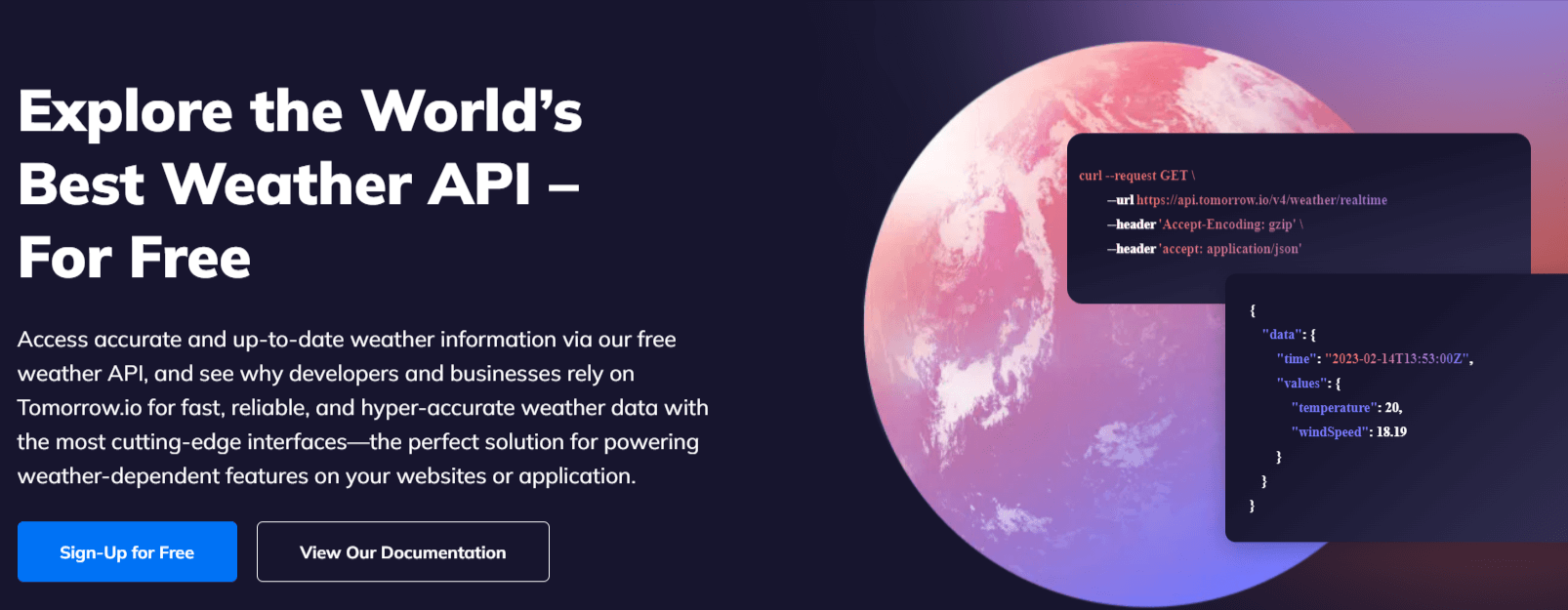What Is Wind Gust?
Wind gusts are weather data that determine short bursts of wind speed. Here's how to fetch that data with Tomorrow.io
Updated May 15, 2024.
Wind gusts have the potential to impact various sectors. For example, aviation and maritime operations require accurate knowledge of wind gusts to ensure the safety of vessels and aircraft during takeoffs, landings, and navigation. Similarly, in event planning and emergency management, anticipating wind gusts and other weather data can prevent accidents and facilitate timely responses to weather-related emergencies.
Explaining Wind Gust
In simple terms, wind gusts are measured as the maximum bursts of wind speed that occur during short intervals, typically lasting a few seconds. They are reported separately from average wind speeds, which describe sustained wind conditions over a longer period.
Meteorologists use specialized equipment such as anemometers to capture these quick spikes in wind velocity, which are crucial for detailed and accurate weather reporting. Wind gusts are typically measured in m/s (meters per second) or mph (miles per hour).
» Learn more about the wind gust data field from the Tomorrow.io documentation
Fetching Wind Gust Data With the Tomorrow.io API
The first step to fetching wind gust data is to create an account with Tomorrow.io by visiting the sign-up page and filling out the registration form.
When you're done, you'll have an API key that you can use to fetch weather information. In this example, we'll use the weather timelines API, which allows us to query specific weather conditions such as wind gusts.
Using the Timelines API in Python
Once we have an account and an API key, here's how to use the timelines API in Python. First, we have to create a Python project in any IDE (such as PyCharm, for example) and create a Python file with a ".py" extension—let's name it "main.py".
After opening the file, make sure to install the requests library, which allows you to send HTPP requests using Python. To install "requests", simply run the following code in your terminal:
python -m pip install requests
Now that you're all set, you can paste the following code snippet below and run it:
import requests
url = "https://api.tomorrow.io/v4/timelines?apikey=YOUR_API_KEY"
payload = {
"location": "Paris",
"fields": ["windGust"],
"units": "metric",
"timesteps": ["1h"],
"startTime": "now",
"endTime": "nowPlus1h"
}
headers = {
"accept": "application/json",
"Accept-Encoding": "gzip",
"content-type": "application/json"
}
response = requests.post(url, json=payload, headers=headers)
print(response.text)
As we can see, the code snippet uses the timelines API to retrieve data on the "windGust" field in Paris (or any location using the city name or even zip code) over the next hour. It specifies several parameters in the payload, including the location, the type of units, and the timeframe.
To actually run this script, "YOUR_API_KEY" needs to be replaced with a valid API key from Tomorrow.io.
» Use a different language? Here's how to fetch a weather API in JavaScript
Analyzing the Result
Let's take a look at the output:
{
"data": {
"timelines": [
{
"timestep": "1h",
"endTime": "2024-04-15T12:00:00Z",
"startTime": "2024-04-15T11:00:00Z",
"intervals": [
{
"startTime": "2024-04-15T11:00:00Z",
"values": {
"windGust": 15.31
}
},
{
"startTime": "2024-04-15T12:00:00Z",
"values": {
"windGust": 14.48
}
}
]
}
]
}
}
As we can see, the output provides wind gust data for a location over a one-hour period, specifically from 11:00 to 12:00 on April 15. At the first interval, the wind gust is recorded at 15.31 m/s, indicating a relatively strong gust. By the next interval at 12:00, there is a slight decrease to 14.48 m/s, suggesting a slight reduction in wind intensity.
Faster Wind Gust Data With Tomorrow.io
Understanding and accessing wind gust data through the Tomorrow.io API can provide valuable insights for a range of applications, from ensuring safety in aviation and maritime operations to planning outdoor events effectively. By utilizing the power of detailed, real-time meteorological data, users can make informed decisions that enhance safety and efficiency in response to rapidly changing weather conditions.

